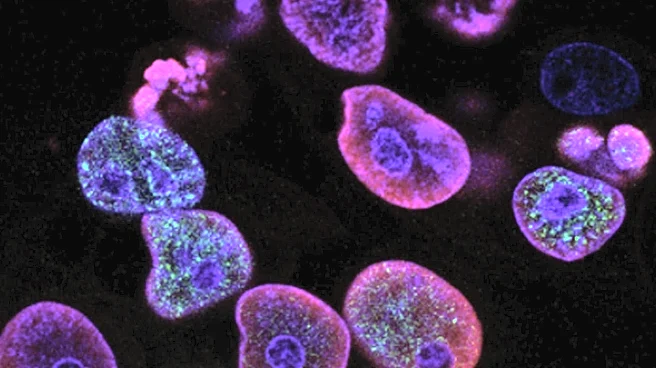What's Happening?
Recent research has highlighted potential complications in interpreting cancer scans for patients using GLP-1 receptor agonist drugs, commonly prescribed for weight loss and type 2 diabetes. These medications can alter glucose metabolism and affect the body's stress and energy systems, leading to unique uptake patterns in FDG PET-CT scans. These scans, which use a radioactive form of glucose to identify areas of high metabolic activity, could show increased uptake in skeletal muscle, heart muscle, and brown adipose tissue. Such patterns might be misinterpreted as cancer or inflammatory disease if the patient's medication history is not considered. The study, conducted by Alliance Medical Ltd and presented at the European Association of Nuclear Medicine's Annual Congress, suggests that these altered patterns are becoming more common, yet there is no specific guidance addressing this issue in the UK.
Why It's Important?
The findings are significant as they could lead to misinterpretation of cancer scans, resulting in unnecessary investigations, inappropriate cancer staging, and delays in treatment. This not only has medical implications but could also cause stress for patients. Recognizing the characteristic uptake associated with GLP-1 agonists is crucial to avoid unnecessary anxiety and ensure patients receive appropriate care. The study emphasizes the need for imaging teams to document patients' medication histories carefully to aid in accurate interpretation. As the use of GLP-1 agonists grows, developing formal guidance on their impact on FDG PET-CT scans becomes increasingly important to prevent potential misdiagnoses and ensure effective patient management.
What's Next?
The researchers plan to expand their investigation across more imaging centers to gather evidence for specific guidelines. They aim to collaborate internationally to develop comprehensive guidance that considers the effects of GLP-1 agonists on cancer scans. This effort seeks to improve the accuracy of scan interpretations and patient care globally. Until formal guidelines are established, the study recommends that imaging teams continue documenting medication histories and consider these factors during scan interpretation.
Beyond the Headlines
The study underscores the broader implications of integrating medication history into diagnostic processes, highlighting the intersection of pharmacology and imaging technology. It raises ethical considerations about patient care and the importance of avoiding unnecessary medical interventions. As personalized medicine advances, understanding how various treatments interact with diagnostic tools will be crucial in optimizing healthcare outcomes.










